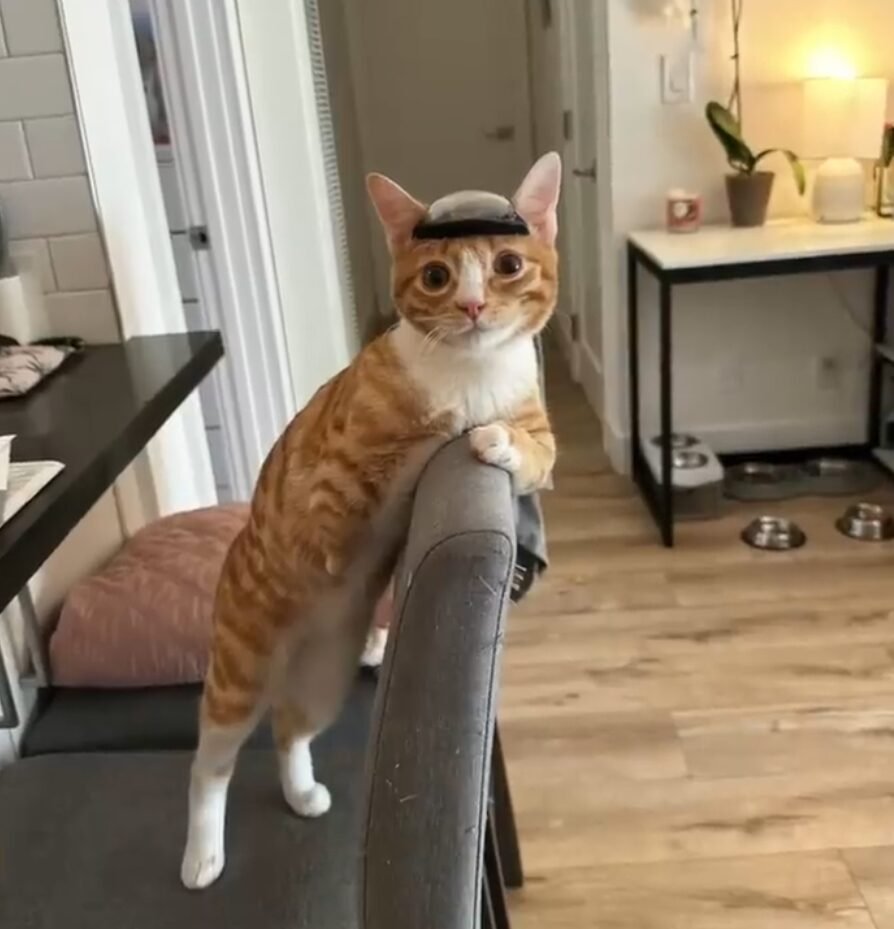Meet the Pallas Cat
There are many interesting animals, but one Pallas cat remains famous because of both its appearance and reputation as the grumpiest cat in the world. The mysterious cat whose face has always been saddened and whose magnificence is evoked by special kinds of evolution to survive in cold places has always captured and enchanted all animal lovers around the world. This piece explores the world of the Pallas cat, finding out all its characteristics, how it behaves, and what will make it appear at times really grumpy.

Overview of Otocolobus manul
Otocolobus manul is a small wildcat. It inhabits Central Asian fields and mountains under the scientific nomenclature. Because of the silhouette of its face and the cubby stature, it would be expected to find these features in colder places where little body heat escaped off of its body. Its coat of heavy hair keeps the dog warm, while the cold conditions apply to the latter, and it has a rather odd short-legged appearance that is low to the ground, giving it a kind or almost grumpy-like face. Because these cats are shy and live alone, animal lovers find them very interesting to study. One thing that makes the Pallas cat stand out is its grumpy face. This unique look is mostly because of the way its face is built. The Pallas cat’s face is flattened, its lips are big, and its eyes are furrowed. It looks like it’s always frowning. Pallas cats don’t have to be mean or nasty, even though this face makes it look like they are. It was just the way their fur lay and the shape of there face.

Solitary andnocturnal Habits
Pallas cats live in cold, high-altitude habitats. Their thick fur keeps them warm in the winter and also helps them blend into their rocky or snowy habitats. The fact that their bodies are low and their legs are short helps them stay warm and move through snow. These physical traits are very important for them to survive in the harsh settings where they live. Pallas cats are known for living alone and being hard to find. They are nocturnal; they spend most of their days sleeping in rock fissures or pits. When they go out and are active, they are brilliant hunters, preying on small mammals, birds, and insects. Despite their gruff appearance, the Pallas cat is not especially aggressive, except when cornered. These are generally territorial and communicate between one another through scent markings.

Challenges in the Wild: Habitat Loss and Human Encroachment
The wild Palas cats catch birds, insects and small animals, like voles or hares. They are good anglers because they can be very stealthy and blend in with their surroundings. When there is a prey, they will quietly walk to the vicinity and then explode at once. This method works well in their cold, open settings where it can be hard to see. In the wild, the Pallas cat is in danger of losing its environment because of more farms and people killing it. They are hard to study because they are so sneaky, but efforts are being made to protect their environments and make sure they stay alive. Wildlife refuges and conservation groups are trying to stop these dangers and make more people aware of how important it is to protect Pallas cats.

Adaptation to Domestication and Challenges
However, pets like the Pallas cat have been known to adjust well to new surroundings once in captivity, although they can be a handful with their exotic nature. The animals in this zoo and wildlife parks, especially the wild animals, are stored in boxes that mimic natural habitats in original forms. These enclosures have activities to make the animal occupied and to ensure it is healthy at all times. Therefore, to ensure that the kids are healthy and happy, it requires one to be very keen on what the kids put in their mouth and how they may be trained on how they can learn new things. Surprisingly, these kittens really do have to make grumpy faces in order to survive as Pallas cats. Their manner of swaying their heads and facial expressions enable them to camouflage their faces and hence be less conspicuous to assailants as well as the prey. Because they live alone, this disguise is an important trait that helps them stay hidden while they hunt and stay out of harm’s way.

The Role of Media in Highlighting the Pallas Cat
A number of Pallas cats have become well-known thanks to study and the media. Cats that are the subject of films or studies that show off their unique behaviours and changes are good examples. The micro/narratives mentioned above do more than merely expose peculiarities of the Pallas cat; these micro/narratives assist in seeing the role of cats in the environment. Unfortunately, Pallas cats face extinction and they need your support to survive We should protect them; thus, we should donate. One can assist by donating money to animal organisations, participating in the protection measures or by providing as much information regarding the particular species as possible. Every action helps keep these interesting animals and their homes safe from new dangers.

Like with all feline species, there are some similarities that are common with the pallas cats but there are also distinctions. It’s a small animal and unlike lions or tigers, it adapted to live in cold climate. Through identifying these similarities and differences, one is in a good position to know more about how these wild cats evolved to live within their various environments. Sometimes animals that have rather unpleasant expressions, such as the aforementioned Pallas cat, get our interest because of how adorable they are. Nevertheless, if one looks closely at the face of the Pallas cat, this clearly gives the animal an imperative look of irritation, but this simply adds to its charm and mystique. This plea calls to stop and look at the world around us, noting the numerous and diverse types of animals and in so doing, emphasises how important and fascinating those animals are and how they deserve to be and should be protected.

Protecting the Pallas Cat
We identified several tools for those people who would like to get more information about Pallas cats. What you know about them, you can only read about their behaviour, protection, and history in books, films, and websites. Through the aforementioned tools, you can know more and get to love this one-of-a-kind cat. The Pallas cat, with its grumpy face and amazing ways of surviving in cold places, is a fascinating example of how creative nature can be. It is interesting to study because of its unique traits and behaviours, which remind us of how varied and complicated wildlife is. By helping with conservation efforts and learning more about these amazing cats, we can help them stay alive and enjoy the beauty of their grumpy charm.

Image Of World’s Grumpiest Cat


















